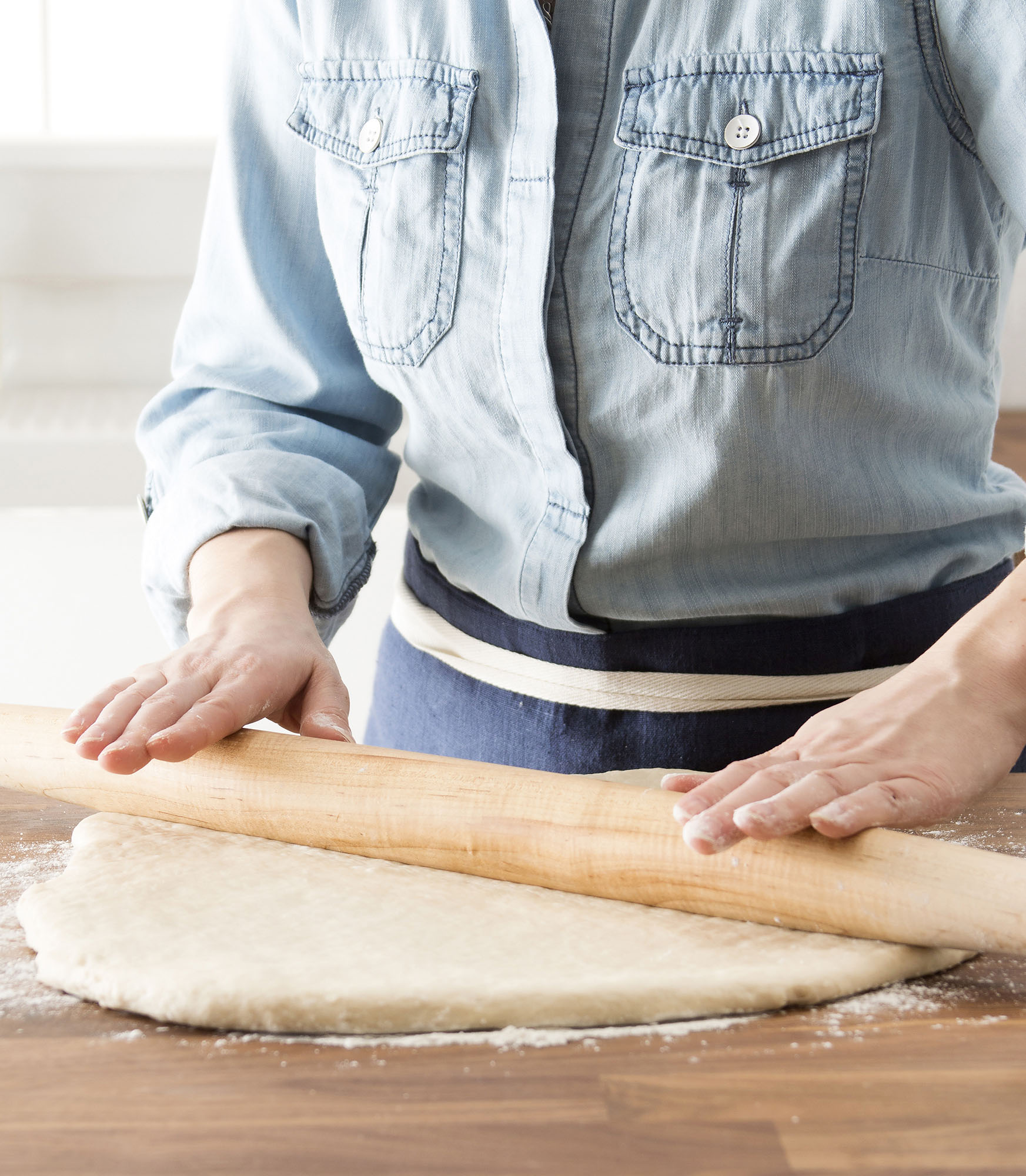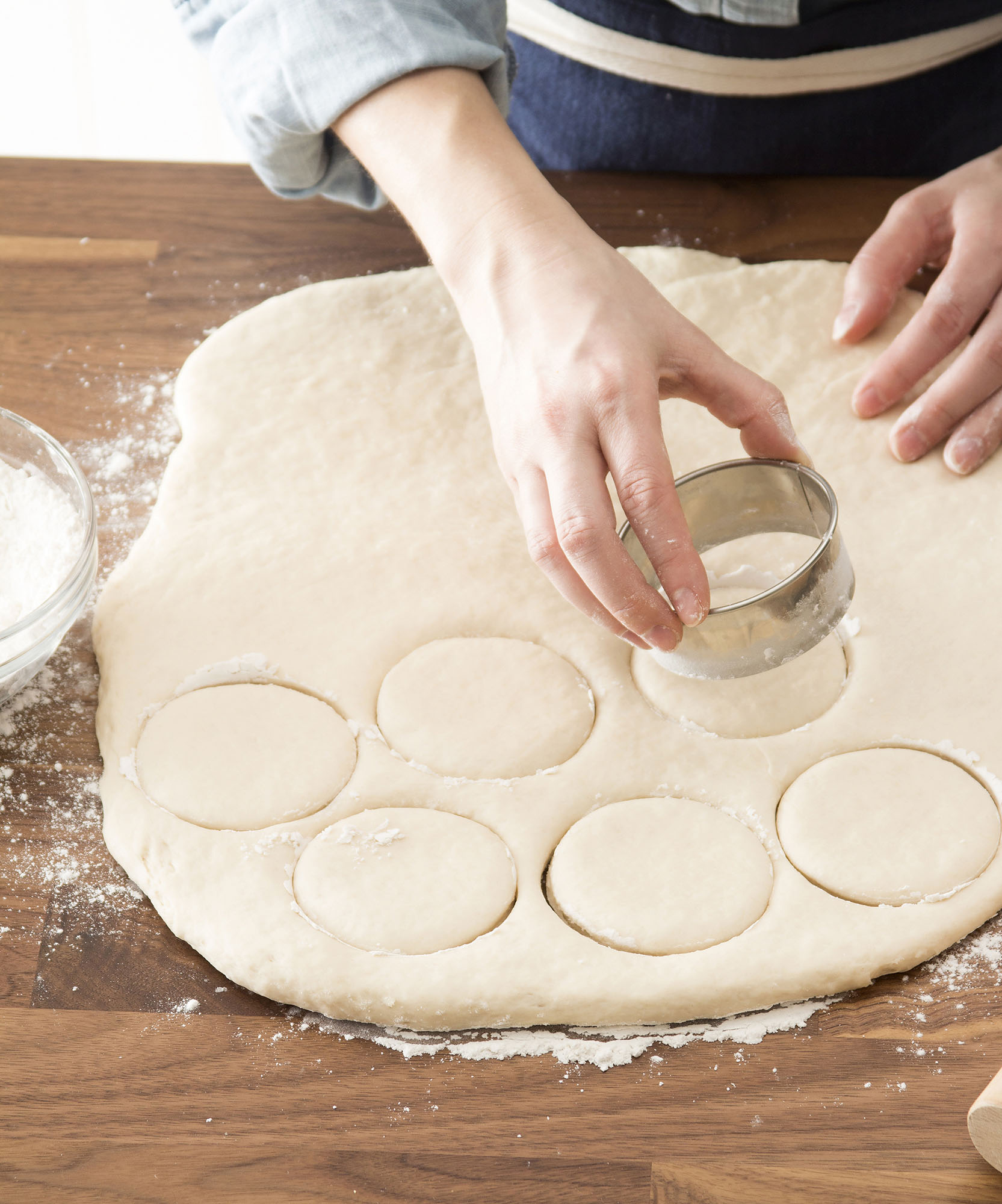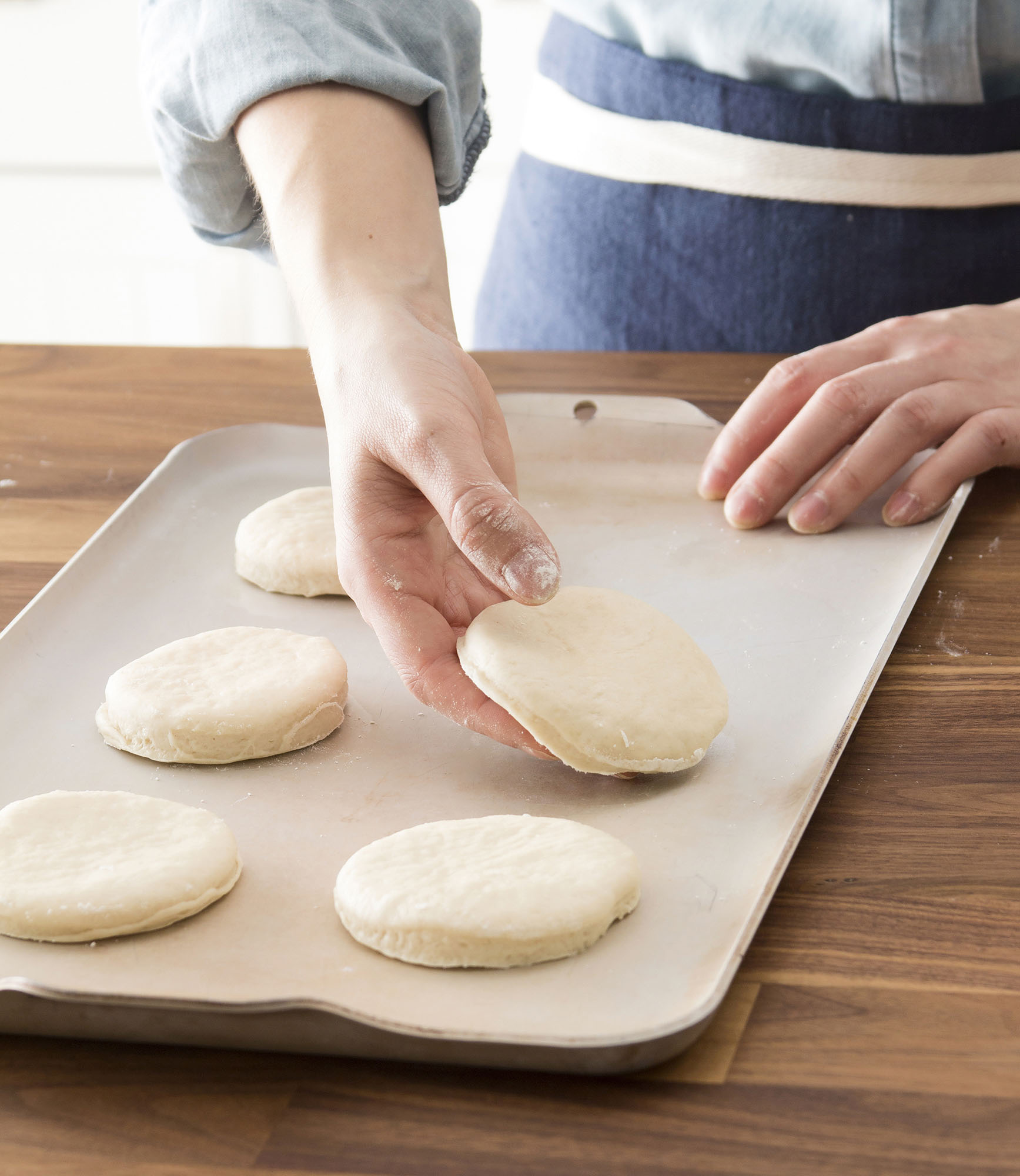BUTTERMILK ANGEL BISCUITS
This recipe calls for a technique known as cutting in, which means rapidly breaking down shortening (or sometimes cold butter) with either a pastry blender or two knives.
—Carol Holladay, Danville, AL
Prep: 30 min. + standing • Bake: 10 min. • Makes: 2 dozen
2 packages (1/4 ounce each) active dry yeast
1/4 cup warm water (110° to 115°)
5 1/4 to 5 1/2 cups self-rising flour
1/3 cup sugar
1 teaspoon baking soda
1 cup shortening
1 3/4 cups buttermilk
1. In a small bowl, dissolve yeast in warm water. In a large bowl, whisk 5 1/4 cups flour, sugar and baking soda. Cut in the shortening until mixture resembles coarse crumbs. Stir in buttermilk and yeast mixture to form a soft dough (dough will be sticky).
2. Turn onto a floured surface; knead gently 8-10 times, adding more flour if needed. Roll dough to 3/4-in. thickness; cut with a floured 2 1/2-in. biscuit cutter. Place 2 in. apart on greased baking sheets. Let stand at room temperature 20 minutes.
3. Preheat oven to 450°. Bake 8-12 minutes or until golden brown. Serve warm.
HOW TO MAKE BISCUITS

• Turn dough onto a lightly floured surface and knead gently for as many times as the recipe directs. Be gentle! Overkneading will keep the dough from rising.

• Roll dough evenly to 3/4-in. thickness.

• Cut with a floured biscuit cutter, using a straight downward motion; do not twist cutter. Twisting will make the layers stick together and the biscuits will not rise as high.

• Place biscuits on a greased baking sheet. Place 2 in. apart for biscuits with crusty sides or almost touching for softer sides.

TEST KITCHEN TIP
To make sure active dry yeast (not quick-rise yeast) is alive and active, you may first want to proof it. Try this easy method:
Dissolve one package of yeast and 1 teaspoon sugar in 1/4 cup warm water (110° to 115°). Let stand for 5 to 10 minutes. If the mixture foams up, the yeast mixture can be used because the yeast is doing its job. If it does not foam, throw the yeast away.




